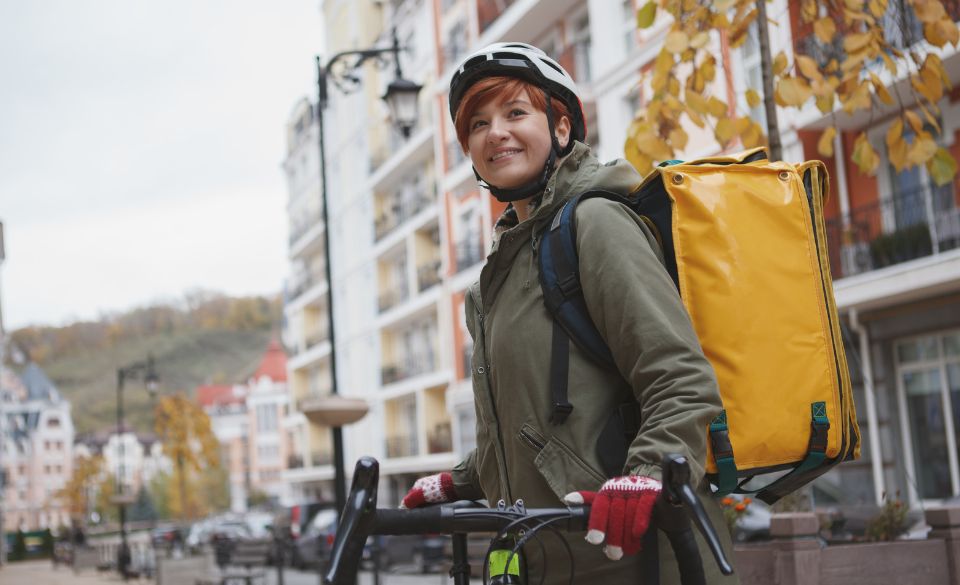
5 Reasons Why You Should Avoid Cycling with a Backpack
Page Contents
If you’re a cycling enthusiast who frequently hits the road on two wheels, you might have considered using a backpack to carry your essentials. While it might seem convenient at first, there are several compelling reasons why you should think twice before strapping on that backpack and pedaling away. From potential health concerns to overall cycling experience, let’s dive into why cycling with a backpack might not be the best choice.
1. Strain on Posture and Back Health
Picture this: you’re cruising along, wind in your hair, and suddenly you become keenly aware of the nagging discomfort on your shoulders and lower back. Cycling with a backpack can put undue strain on your posture, leading to discomfort or even pain in the long run. Studies have shown that prolonged cycling with a backpack can contribute to musculoskeletal issues, affecting your overall back health. Research from the Journal of Occupational Health points out that cyclists who use backpacks report more discomfort and strain than those who opt for panniers or bike-mounted bags.
2. Restricted Range of Motion
Cycling demands fluid and controlled movements, allowing your body to adapt to the changing terrain. However, having a backpack on your back can significantly restrict your range of motion, particularly when leaning forward for aerodynamics or maneuvering through challenging terrains. This can not only impede your cycling performance but also affect your ability to respond swiftly to sudden obstacles or road hazards.
3. Increased Heat and Sweating
Cycling already gets your heart racing and your body working hard, which naturally leads to an increase in body temperature. Adding a backpack into the mix can exacerbate this issue by trapping heat against your back and shoulders. This can result in excessive sweating, discomfort, and even skin irritation over time. A study published in the European Journal of Sport Science found that cyclists wearing backpacks had higher skin temperatures and increased sweat rates compared to those without backpacks.
4. Balance and Stability Concerns
Maintaining balance and stability is key when cycling, especially during high-speed descents or tricky turns. Wearing a backpack can shift your center of gravity and alter your balance, potentially impacting your control over the bike. Researchers from the Journal of Sports Science & Medicine found that cyclists with backpacks exhibited slightly compromised stability, emphasizing the importance of preserving your balance for a safe and enjoyable ride.
5. Potential Impact on Bike Handling
Your bike is designed to distribute weight evenly across its frame, allowing for smooth and controlled handling. Adding a backpack introduces an external weight that can disrupt the bike’s intended balance, affecting how it responds to your movements. Studies conducted by bike manufacturers have highlighted how excessive weight on your back can influence bike stability and steering, potentially diminishing your overall cycling experience.
Exploring Alternatives: Panniers and Bike-Mounted Bags
Now that we’ve delved into the reasons why cycling with a backpack might not be the best idea, let’s explore some practical alternatives that can enhance your cycling experience while keeping you comfortable and safe on the road.
1. Panniers: A Balanced Approach
Panniers are versatile bags that attach to the sides of your bike’s rear rack. Unlike backpacks, panniers distribute weight evenly on both sides of the bike, helping to maintain your balance and stability. This even distribution minimizes the strain on your body, allowing you to cycle comfortably for longer durations. Panniers come in various sizes and styles, making them a convenient option for carrying everything from groceries to work essentials.
2. Frame Bags: Maximize Bike Handling
Frame bags are designed to fit within your bike’s frame, optimizing weight distribution and preserving your bike’s handling characteristics. These bags are particularly useful for storing smaller items, such as tools, energy bars, or water bottles. By keeping the weight closer to the bike’s center, frame bags help maintain stability and control, enhancing your overall cycling performance.
3. Handlebar Bags: Easy Access
Handlebar bags attach to the handlebars of your bike, providing easy access to your belongings while riding. These bags are great for storing items you might need to reach quickly, such as a map, snacks, or your phone. While handlebar bags can add some weight to the front of the bike, their placement generally has a minimal impact on bike handling and stability.
4. Seat Packs: Streamlined Storage
Seat packs are attached to the underside of your bike’s saddle, offering streamlined storage without affecting your posture or balance. These packs are ideal for carrying lightweight essentials like a spare tube, tire levers, or a rain jacket. Seat packs keep the weight low and centered, minimizing any disruptions to your bike’s stability.
5. Hydration Packs: Stay Cool and Hydrated
If staying hydrated on your ride is a priority, consider using a hydration pack. These packs include a water reservoir that you can sip from through a tube while cycling. Unlike traditional backpacks, hydration packs are designed to prioritize comfort and cooling, with breathable materials and a snug fit that reduces heat buildup.
Incorporating these alternatives into your cycling routine can significantly improve your comfort, performance, and safety on the road. Remember that every cyclist’s needs are unique, so explore different options to find the setup that best suits your style of riding and the items you need to carry.
Final Words – 5 Reasons Why You Should Avoid Cycling with a Backpack
In conclusion, while a backpack might be your go-to solution for carrying items while cycling, it’s important to recognize the potential drawbacks it can bring to your biking experience. From posture concerns to restricted mobility, excess heat, compromised balance, and potential impacts on bike handling, these factors collectively make a compelling case against cycling with a backpack. To enhance your comfort and safety while cycling, consider exploring alternative storage options such as bike-mounted bags or panniers. Your back, posture, and overall cycling enjoyment will thank you in the long run.



